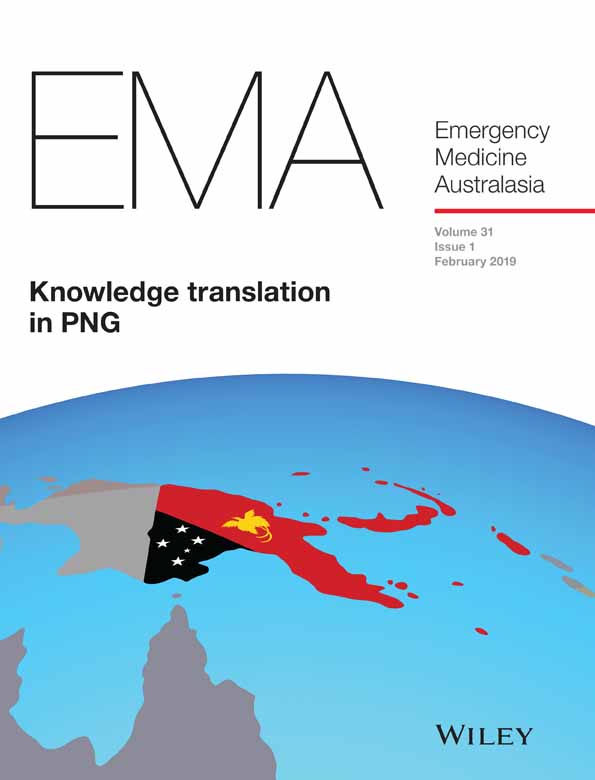Exploring factors that influence adult presentation to an emergency department in regional Queensland: A linked, cross-sectional, patient perspective study
Abstract
Objective
Explore factors that influence presentation at a regional hospital ED and identify opportunities to reduce attendance, particularly for adults with chronic conditions.
Methods
Cross-sectional survey of ED attenders, for 1 month period (March to April 2014), with linkage of survey data to administrative data sets.
Results
A total of 1000 adults completed the survey of which 549 (54.9%) self-identified as living with a chronic condition. Over half (n = 572, 57.2%) had their presenting problem for less than 24 h prior to attending the ED and 56.8% (n = 568) attended the ED outside working hours. Most ED presentations were recorded in the administrative data set as self-referred (n = 933, 93.3%); however, 29% (n = 290) of survey participants reported being referred to the ED by a medical practitioner. The majority of adults had a regular general practice (n = 863, 86.3%) with 30% (n = 258) visiting their practice in the week prior to presentation at the ED. Awareness of services such as the 13-Health telephone advice line was generally low (n = 370, 37%) and most did not consider alternative health services as suitable for their care. High-quality care, co-location of diagnostic services and extended hours of service were important to patients.
Conclusion
Despite being connected to a general practice, people focussed their health-seeking behaviour on the ED in the immediate period prior to presentation. Patients reported a limited awareness of alternative health services and opportunities exist to potentially reduce ED attendance, particularly for young and middle-aged adults with chronic conditions.




